Wien 1 – Linie 24A
Die Strecke
Mit diesem Add-On tauchst Du direkt ins Geschehen auf der Linie 24A im 22. Wiener Gemeindebezirk (Donaustadt) ein.
Die Linie 24A ist eine wunderschöne und abwechslungsreiche Linie, deren Routenverlauf im Laufe der Zeit aufgrund verkehrspolitischer Maßnahmen adaptiert wurde. Der ursprüngliche Routenverlauf startete in Zentrum Kagran, dem bis dato wichtigsten Knotenpunkt in diesem Bezirk für den Umstieg zu anderen Buslinien, Straßenbahnlinien sowie zur U-Bahnlinie U1, die dort ihre Endstation hatte. Im Jahr 2006 erfolgte die Verlängerung der U-Bahnlinie U1 über Kagran hinaus nach Leopoldau und damit eine Änderung für die Linienverläufe im Oberflächennetz. Bis 2006 kamen in den letzten Betriebsjahren sowohl Hochflur- als auch Niederflurbusse im Mischbetrieb zum Einsatz und wurden von der Betriebsgarage Vorgarten betrieben.
Im Zuge der Verlängerung der U1 im September 2006 wurde die Buslinie 24A bis Kagraner Platz gekürzt und vollständig auf Niederflurbetrieb umgestellt. Gleichzeitig wurde die Linie in das RBL (rechnergesteuertes Betriebsleitsystem) aufgenommen.
Die Linie 24A führt vom Herzen des Bezirkes an den Stadtrand in Neueßling bis zur Invalidensiedlung. Du wirst schnell feststellen, dass die Mischung aus dichtverbautem Gebiet und schönen Stadtrandsiedlungen mit Feldern das Flair dieser Linie ausmacht.
In diesem Add-On gibt es 3 Linienführungen, sowie diverse Varianten mit fahrplanmäßigen Ablenkungen, die Dir eine interessante Abwechslung entlang dieser Strecke bieten werden.
Die Linienführungen der Linie 24A sehen im Detail so aus:
- Kagran (U) - Breitenlee Schule bzw. Kagraner Platz (U) - Breitenlee Schule
- Kagran (U) – Neueßling bzw. Kagraner Platz (U) – Neueßling
- Kagran (U) – Invalidensiedlung bzw. Kagraner Platz (U) – Invalidensiedlung
Weiters sind fahrplanbedingt folgende Ablenkungen von der Stammstrecke möglich:
- Fahrten über Breitenlee Nebenfahrbahn
- Fahrten über die Schleife Algenweg – Huflattichweg – Daphneweg
- Einige Kurse über Breitenlee hinaus werden morgens und zu Mittag über Breitenlee Schule geführt
Diese Linie wird ausschließlich mit Normalbussen betrieben und es stehen Dir grundsätzlich zwei unterschiedliche Bustypen zur Verfügung:
- LU 200 (die letzte Hochflur-Generation in Wien)
- NL 205 (die erste Niederflur-Generation in Wien)
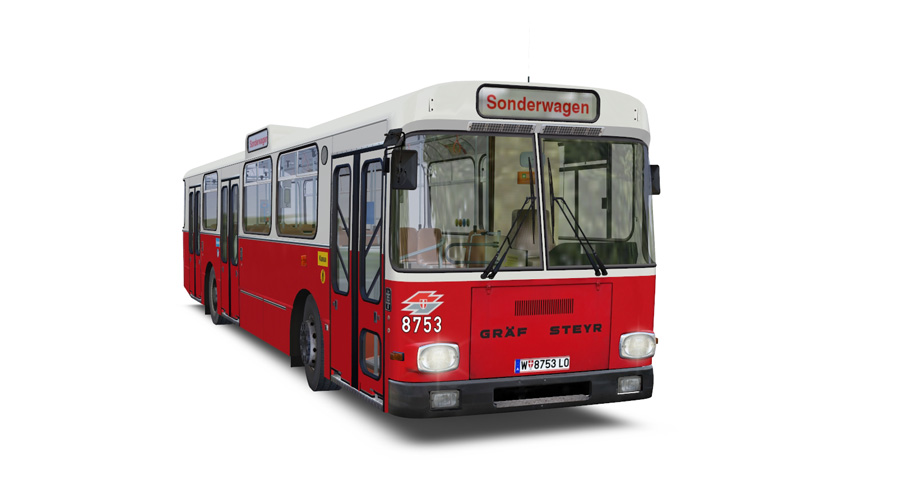
LU 200 M11
Der LU 200 M11 (= "Linienbus mit Unterflurmotor, 200 PS und 11m Länge") ist eine österreichische Spezialkonstruktion von den Firmen ÖAF-Gräf & Stift und Steyr-Daimler-Puch für die Wiener Verkehrsbetriebe. Der Wagenkasten ist dem deutschen VÖV-Standard- Stadtlinienbus der ersten Generation angeglichen, hat aber entsprechend Wiener Gepflogenheiten eine dritte Einstiegstür im Heckteil. Für den Antrieb wird ein Ottomotor für Flüssiggasbetrieb verwendet.
Mit 345 Stück ist die Serie der LU 200 mit Abstand die größte beschaffte Busserie in der Geschichte der Wiener Linien und gleichzeitig die am längsten beschaffte (1978-1992). Der letzte planmäßige Einsatz eines LU 200 im Linienverkehr der Wiener Linien fand am 21.05.2007 statt.
Der allerletzte LU 200 wurde in seinen letzten Betriebsjahren als Fahrschulbus verwendet und am 09. März 2009 nach fast exakt 30 Dienstjahren bei den Wiener Linien außer Dienst gestellt.
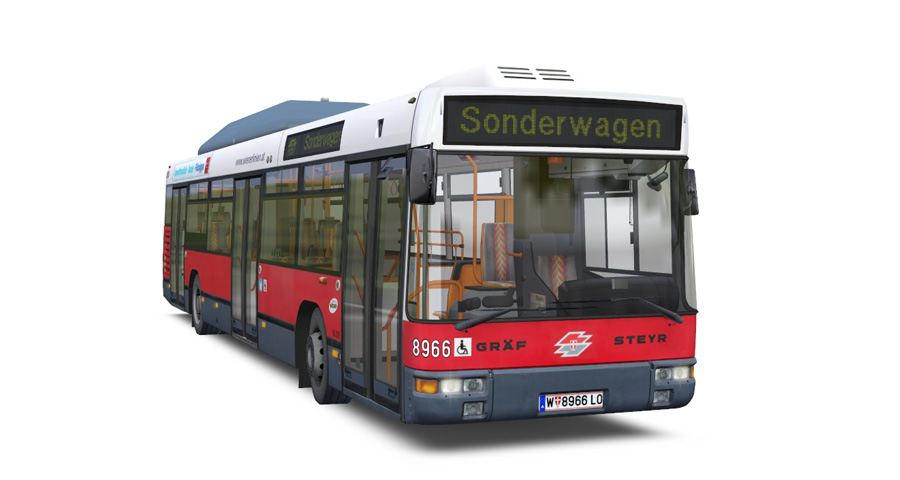
NL 205 M12
Der NL 205 M12 (= "Niederflur-Linienbus, 205 PS und 12m Länge") ist eine österreichische Spezialkonstruktion von den Firmen ÖAF-Gräf & Stift und Steyr-Daimler-Puch für die Wiener Verkehrsbetriebe.
Die Geschichte dieser Bustype liegt ein Stück länger zurück, als es die meisten vermuten würden. Bereits Ende 1988, als noch 70 Stück der Type LU 200 in Produktion gehen sollten, beauftragten die Wiener Verkehrsbetriebe bereits die Firmen Gräf & Stift und Steyr damit, einen neuen Fahrzeugtyp zu entwerfen, der erstmals einen stufenlosen Einstieg ermöglichen soll.
Es folgten Modellstudien und schließlich 1991 zwei Prototypen mit der Bezeichnung "Gräf/Steyr NL 205 M12", die im Jahr 1992 erstmals in den Testbetrieb gingen.
Im Vergleich zur Vorgängertype LU 200 gab es sehr viele Änderungen und Modernisierungen, die durchaus revolutionär waren. Neben der elektronischen Zielanzeige und der Haltestelleninnenanzeige waren die Sitze erstmalig gepolstert und podestlos ausgeführt. Die Flüssiggastanks mussten aufgrund der Niederflurbauweise auf dem Fahrzeugdach unter einer Schutzhaube untergebracht werden. Diese Entwicklungen haben später auch einige deutsche Bushersteller übernommen und in ihre Fahrzeugproduktionen einfließen lassen. Für den Antrieb wird wie beim LU 200 ein Ottomotor für Flüssiggasbetrieb verwendet. 1994 wurde diese Bustype erstmals im Linienbetrieb eingesetzt.
Eine Besonderheit dieser Fahrzeuggeneration ist die Fahrerklimaanlage bei einigen Betriebsnummern. 1997 wurden erste Versuche durchgeführt und nach erfolgreichen Tests ab Betriebsnummer 8950 alle Fahrzeuge serienmäßig mit einer Fahrerklimaanlage ausgestattet. Ebenso wurden 1998 manuell zu bedienende Klapprampen getestet und anschließend bei allen Fahrzeugen eingebaut bzw. nachgerüstet.
Im Jahr 1999 wurde das Steyr-Werk in Wien endgültig geschlossen und damit auch die Produktion des NL 205 eingestellt. Der letzte planmäßige Einsatz eines NL 205 im Linienverkehr der Wiener Linien fand am 27.06.2014 statt.
Aktuell sind noch acht Fahrzeuge der Type NL 205 als Fahrschulbusse bei den Wiener Linien im Einsatz, sowie ein als "Infobus" umgebauter NL 205.
Features des Bus-Simulators
- Normalbus NL 205 M12 (erste Niederflur-Generation)
- Normalbus LU 200 M11 (letzte Hochflur-Generation)
- Strecke Wien - Linie 24A aus dem Jahr 2005 bis Kagran
- Neue Streckenführung Wien - Linie 24A ab dem Jahr 2006 bis Kagraner Platz
- Viele neue Objekte und Straßenmodelle
- Reale Straßenzüge & Gebäude – maximale Authentizität
- Viele verschiedene Routenführungen mit Originalfahrplänen
- Originale Wiener Linien-Haltestellenansagen (!)
- KI-Straßenbahn Type E1+c3
- KI-Straßenbahn Type ULF
- KI-U-Bahn Type U
- Alle Betriebsfahrzeuge sind Originalnachbauten der Wiener Linien
- Neue PKW KI-Fahrzeuge sowie KI-Motorräder – perfekt animiert und damit erstmals im Straßenverkehr in OMSI (!)
- Interessante und anspruchsvolle Streckenführung
- Viele Details und authentische Ausschmückungsobjekte
Screenshots Linie 24A
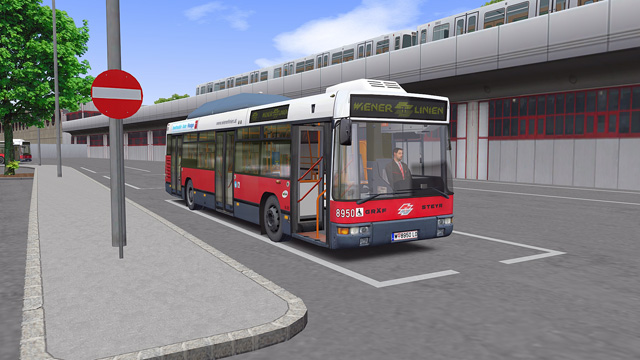 |
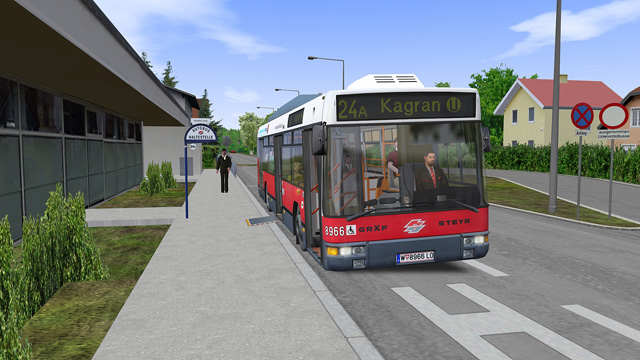 |
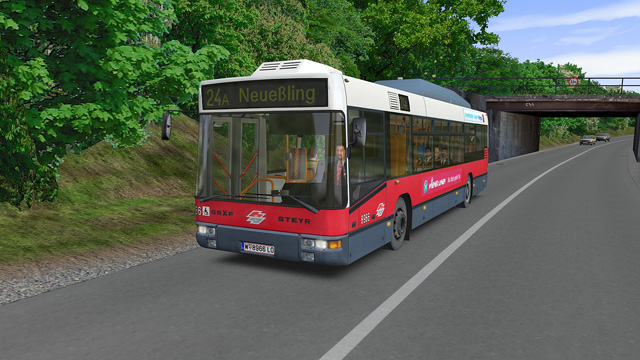 |
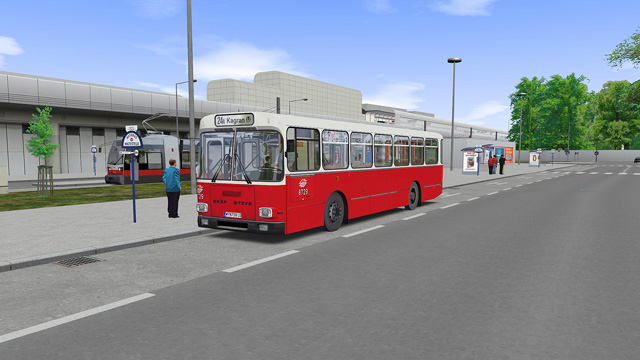 |
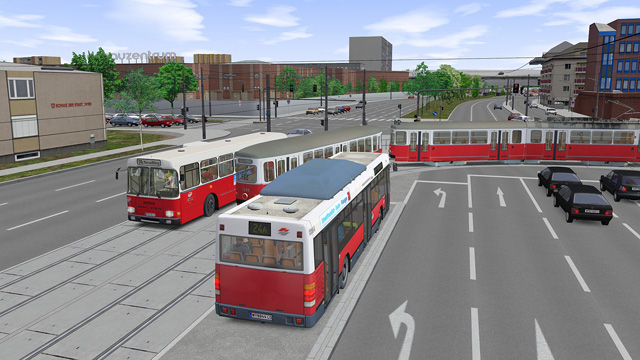 |
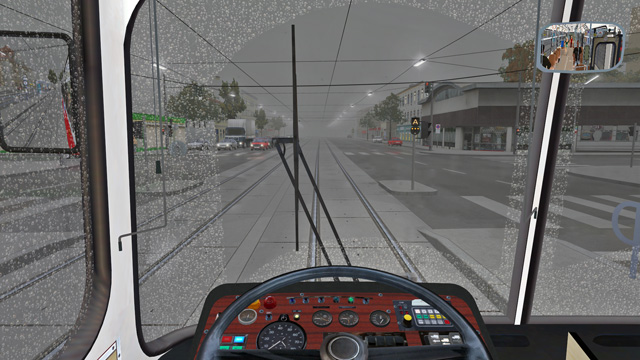 |
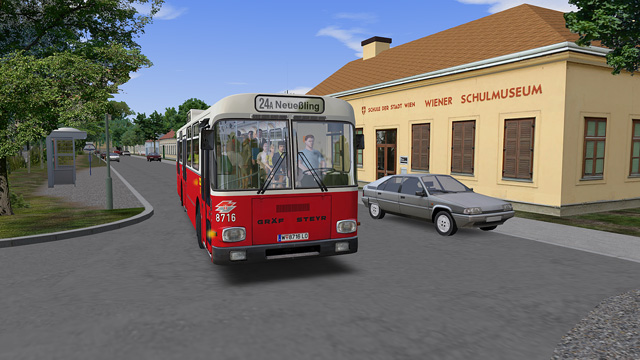 |
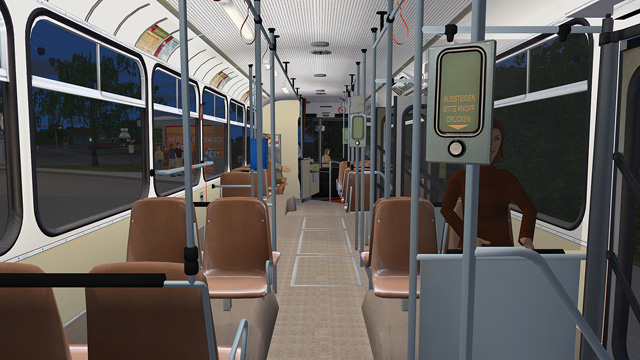 |
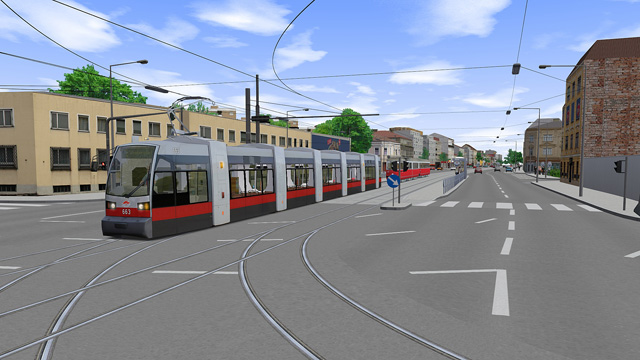 |
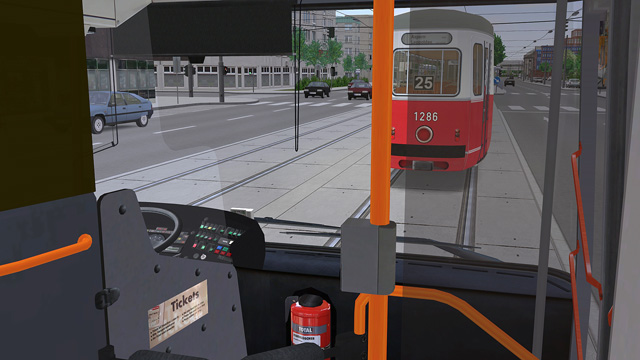 |
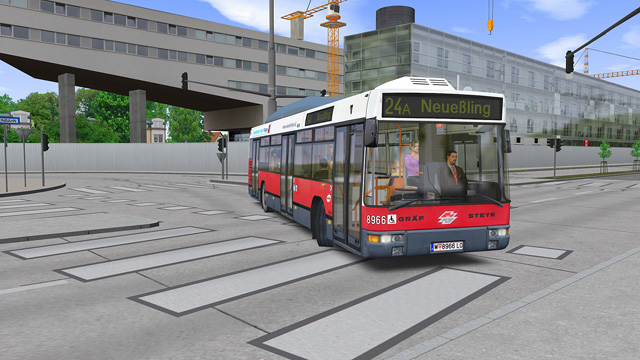 |
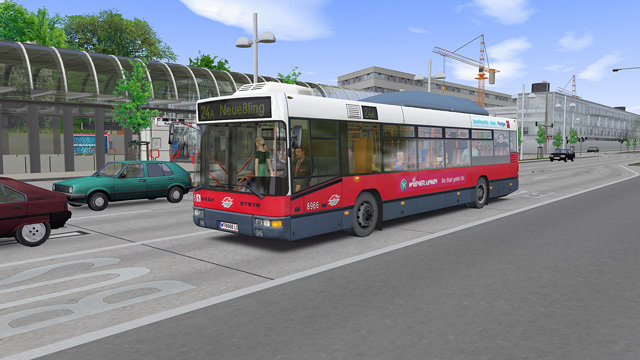 |
